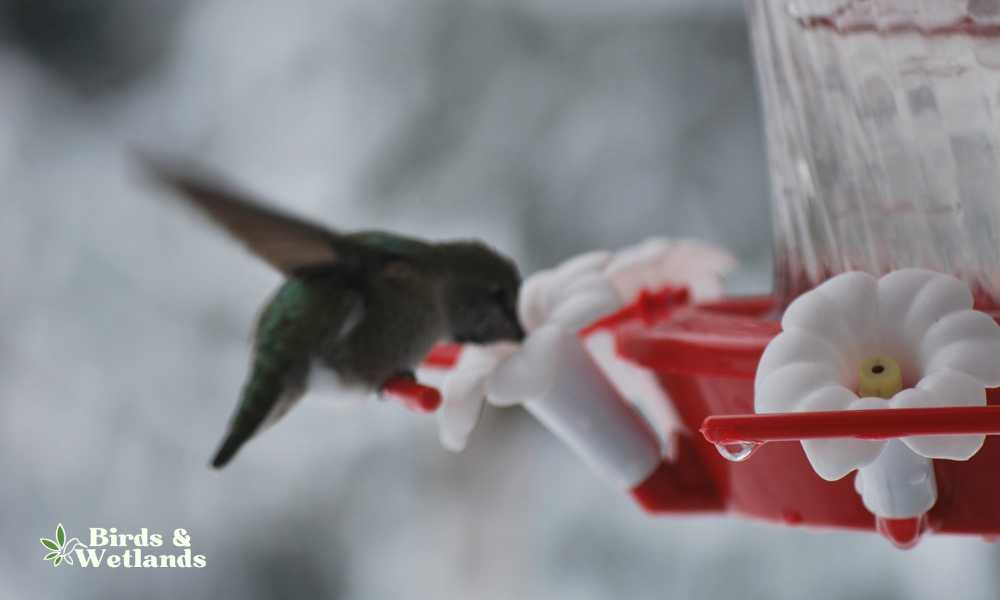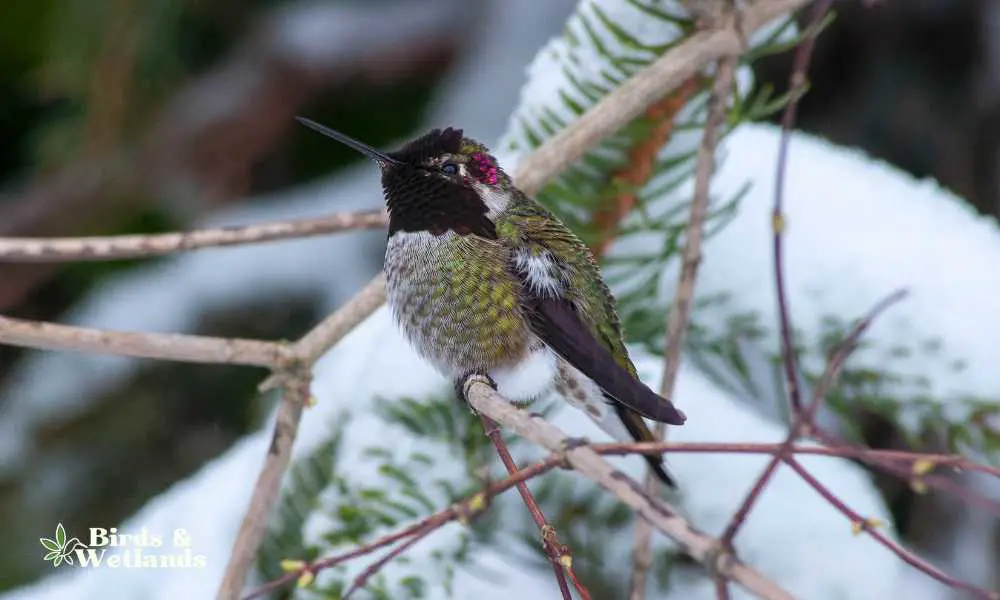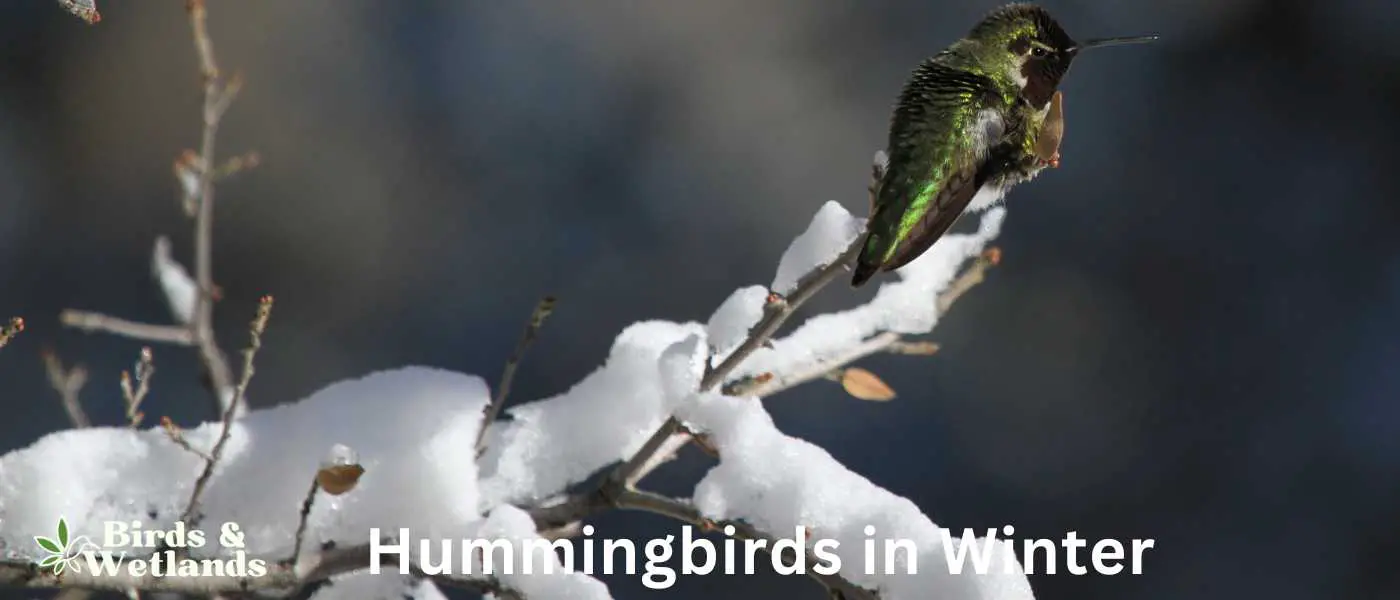Hummingbirds are well known for their incredible ability to hover, fly backward, and even upside down. But, have you ever wondered what these tiny birds do during winter?
Many people assume that hummingbirds travel south to warmer climates, but the truth is that some species actually remain in their breeding grounds year-round. From changes in feeding habits to huddling for warmth, hummingbirds employ unique strategies to make it through the colder months.
So, grab a cup of coffee, sit back, and get ready to discover the fascinating winter habits of these tiny birds!
Key Takeaways on Winter Hummingbirds
How do hummingbirds survive winter?

Hummingbirds, like many bird species, migrate to warmer climates during the winter months. In North America, for instance, most hummingbird species migrate to Central America or Mexico, where they can find abundant food sources all year round.
Here’s a general look at what hummingbirds do in winter:
- Migration: Typically, hummingbirds will begin their migration towards the end of summer, with most leaving by late autumn. This ensures they arrive in warmer climates before winter fully sets in.
- Feeding: Before migration, hummingbirds go through a feeding frenzy known as hyperphagia, where they consume more food than usual to store fat that will fuel their long journey.
- Flying: Hummingbirds migrate alone and generally travel during the day, covering hundreds or even thousands of miles. They are known for their incredible stamina and can fly non-stop for hours at a time during this period.
- Survival: Once they arrive in their winter habitats, hummingbirds will feed on nectar from flowers and small insects, which remain plentiful in these warmer climates.
- Return: As winter ends and spring approaches, the hummingbirds will start their journey back to their summer habitats, where they will breed and start the cycle all over again.
Note that there are some exceptions to this pattern. For example, the Anna’s Hummingbird, native to the west coast of North America, is known to stay in its habitat year-round, even in cooler temperatures. To survive the colder months, these birds go into a state called torpor, reducing their metabolic rate and lowering their body temperature to conserve energy during the night when they can’t feed.
Torpor
One of the key adaptations that most hummingbirds have developed is the ability to enter a state of torpor. During torpor, the bird’s temperature and metabolism drop significantly, allowing it to survive in environments where food is scarce. Torpor is especially useful for species of hummingbirds that breed in temperate regions, where winter temperatures can be harsh.
Hummingbirds also rely on food stores built up during the warmer months. During this time, they consume large amounts of flower nectar or pure sugar and many insects to build up a store of fat, which they can then use as a source of energy during the winter months. Some hummingbirds will also feed on tree sap and fruit during the winter months to supplement their diet.
Thermoregulation
Hummingbirds can also regulate their body temperature through a process known as thermoregulation, which allows them to maintain a relatively stable body temperature, even in the face of freezing temperatures.
Through thermoregulation, they can control blood flow to different parts of their body, which helps them conserve energy, as they do not have to use large amounts of energy to warm themselves up during the winter months.
Do all hummingbird species migrate south in the winter?

Not all hummingbirds travel in the winter. Some birds, such as Anna’s hummingbirds, can tolerate the cold temperatures and remain in their breeding range year-round. They are largely non-migratory because they can find adequate food sources and adjust their metabolic rate to conserve energy.
However, many species of hummingbirds migrate south in the winter to escape the harsh weather and find a more temperate climate. Migratory hummingbirds include ruby-throated hummingbirds, black-chinned hummingbirds, and rufous hummingbirds.
These birds travel thousands of miles to South and Central America, often relying on their fat reserves to fuel their journey. During the migration, these birds may fall victim to numerous challenges, including inclement weather, limited food sources, and predators and other animals.
Should you leave hummingbird feeders out in winter?
Winter is a difficult time of year for hummingbirds as food sources become more and more sparse. Fortunately, modern hummingbird feeders can help sustain the birds in such times.
While leaving your feeder out can certainly provide some extra sustenance for winter populations of this little bird, it’s important to remember that winter care for these birds goes beyond just providing a snack.
Nutrition should be supplemented with shelter and lessened human contact if possible. You should also consider offering shelters that provide protection from harsh winds as well as locations away from predators.
Ensure the feeders are regularly cleaned with only safe materials so that the birds don’t unknowingly contract diseases.
If you want to help these old and younger birds, you can grow nectar bearing flowering plants in your garden. Hummingbirds consume about 50% of their body weight in nectar daily, so they need all the help they can get, especially during extended cold snap.
Where do hummingbirds live in winter?
Non-migratory hummingbirds such as Costa’s hummingbird and other hummingbirds stay in range all year, even after the breeding season. Other year round residents live in the west coast along the Pacific Coast and as far north as southern British Columbia.
Migratory hummingbirds travel to the Gulf coast and other parts of the southern United States. Some birds may even travel further south to Central and South America. The warm and stable temperature and the abundance of food supply such as nectar and more insects attract hummingbirds to these winter areas.
The migration journey of these tiny birds can span thousands of miles, and they can make the trip alone without any help. The exact migration routes and locations that individual hummingbirds choose to winter in can vary greatly, but many will return to the same general areas year after year, demonstrating remarkable homing abilities.
What are the 10 most common hummingbird species in North America?
Here is a list of some of the most common hummingbirds found in North America:
- Ruby-throated Hummingbird
- Black-chinned Hummingbird
- Anna’s Hummingbird
- Rufous Hummingbird
- Calliope Hummingbird
- Broad-tailed Hummingbird
- Allen’s Hummingbird
- Buff-bellied Hummingbird
- Violet-crowned Hummingbird
- Berylline Hummingbird
This list is not exhaustive, as there are other species of hummingbirds that may be found in North America, depending on location and migration patterns.


